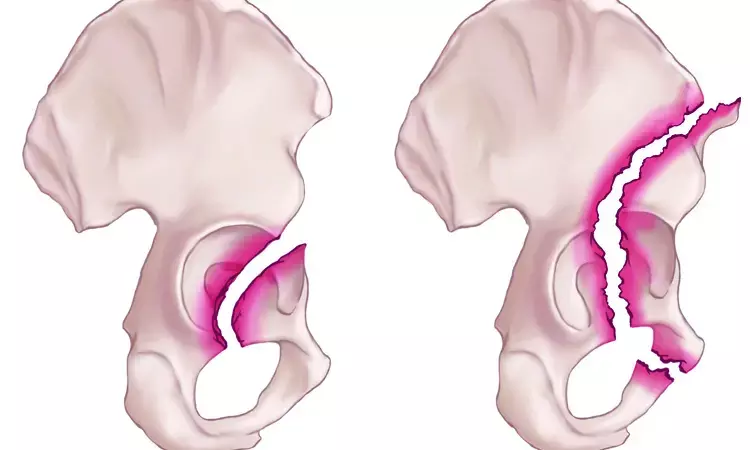- Home
- Medical news & Guidelines
- Anesthesiology
- Cardiology and CTVS
- Critical Care
- Dentistry
- Dermatology
- Diabetes and Endocrinology
- ENT
- Gastroenterology
- Medicine
- Nephrology
- Neurology
- Obstretics-Gynaecology
- Oncology
- Ophthalmology
- Orthopaedics
- Pediatrics-Neonatology
- Psychiatry
- Pulmonology
- Radiology
- Surgery
- Urology
- Laboratory Medicine
- Diet
- Nursing
- Paramedical
- Physiotherapy
- Health news
- Fact Check
- Bone Health Fact Check
- Brain Health Fact Check
- Cancer Related Fact Check
- Child Care Fact Check
- Dental and oral health fact check
- Diabetes and metabolic health fact check
- Diet and Nutrition Fact Check
- Eye and ENT Care Fact Check
- Fitness fact check
- Gut health fact check
- Heart health fact check
- Kidney health fact check
- Medical education fact check
- Men's health fact check
- Respiratory fact check
- Skin and hair care fact check
- Vaccine and Immunization fact check
- Women's health fact check
- AYUSH
- State News
- Andaman and Nicobar Islands
- Andhra Pradesh
- Arunachal Pradesh
- Assam
- Bihar
- Chandigarh
- Chattisgarh
- Dadra and Nagar Haveli
- Daman and Diu
- Delhi
- Goa
- Gujarat
- Haryana
- Himachal Pradesh
- Jammu & Kashmir
- Jharkhand
- Karnataka
- Kerala
- Ladakh
- Lakshadweep
- Madhya Pradesh
- Maharashtra
- Manipur
- Meghalaya
- Mizoram
- Nagaland
- Odisha
- Puducherry
- Punjab
- Rajasthan
- Sikkim
- Tamil Nadu
- Telangana
- Tripura
- Uttar Pradesh
- Uttrakhand
- West Bengal
- Medical Education
- Industry
Age at time of surgery alone may not predict outcomes after periacetabular osteotomy: Study

Periacetabular osteotomy (PAO) in the setting of symptomatic acetabular dysplasia can be successful regardless of patient age alone, reveals a new study.
The study has been published in the Journal of Arthroplasty.
The clinical success of periacetabular osteotomy (PAO) for the treatment of symptomatic acetabular dysplasia is well-documented. Conflicting evidence exists regarding the correlation of age with clinical outcomes. HOOSglobal is a recently validated patient reported outcome (PRO) measure following PAO.
Hence, Brian T. Muffly and associates from the University of Kentucky Department of Orthopaedic Surgery & Sports Medicine, USA conducted the study asses HOOSglobal and WOMAC scores at early follow-up based on age at the time of Periacetabular osteotomy.
The authors conducted a prospective multicenter cohort including a total of 391 patients undergoing PAO with minimum 2-year follow-up (average, 4.71 years). Patients were categorized into 4 age groups: <20 years (N=131), 20-29 (N=102), 30-39 (N=65), and ≥40 (N=34).
A 4x2 repeated measures analysis of variance (ANOVA; Age Group x Time) was used to compare pre- and postoperative HOOSglobal and WOMAC scores between age groups. A multiple linear regression was used to identify predictors of postoperative HOOSglobal scores.
The results showed that –
- HOOSglobal and WOMAC scores increased across all age groups; however, a statistically greater increase in preoperative to postoperative HOOSglobal and WOMAC scores was found in those ≥40 years compared to those <20 (p<0.002), 20-29 (p=0.01), and 30-39 (p=0.02).
- Higher preoperative HOOSglobal scores were predictive of greater postoperative HOOSglobal scores (p<0.001) but age (p=0.65), sex (p=0.80), BMI (p=0.50), and To¨nnis Classification (p=0.07) were not independent predictors of one-year outcomes.
Therefore, the authors concluded that "the absence of differences in early post-operative PROs across multiple age ranges emphasizes that PAO in the setting of symptomatic acetabular dysplasia can be successful regardless of patient age alone."
Therefore, age alone might not be an appropriate selection criterion when evaluating surgical candidates for Periacetabular osteotomy, they further added.
Dr. Nandita Mohan is a practicing pediatric dentist with more than 5 years of clinical work experience. Along with this, she is equally interested in keeping herself up to date about the latest developments in the field of medicine and dentistry which is the driving force for her to be in association with Medical Dialogues. She also has her name attached with many publications; both national and international. She has pursued her BDS from Rajiv Gandhi University of Health Sciences, Bangalore and later went to enter her dream specialty (MDS) in the Department of Pedodontics and Preventive Dentistry from Pt. B.D. Sharma University of Health Sciences. Through all the years of experience, her core interest in learning something new has never stopped. She can be contacted at editorial@medicaldialogues.in. Contact no. 011-43720751
Dr Kamal Kant Kohli-MBBS, DTCD- a chest specialist with more than 30 years of practice and a flair for writing clinical articles, Dr Kamal Kant Kohli joined Medical Dialogues as a Chief Editor of Medical News. Besides writing articles, as an editor, he proofreads and verifies all the medical content published on Medical Dialogues including those coming from journals, studies,medical conferences,guidelines etc. Email: drkohli@medicaldialogues.in. Contact no. 011-43720751


